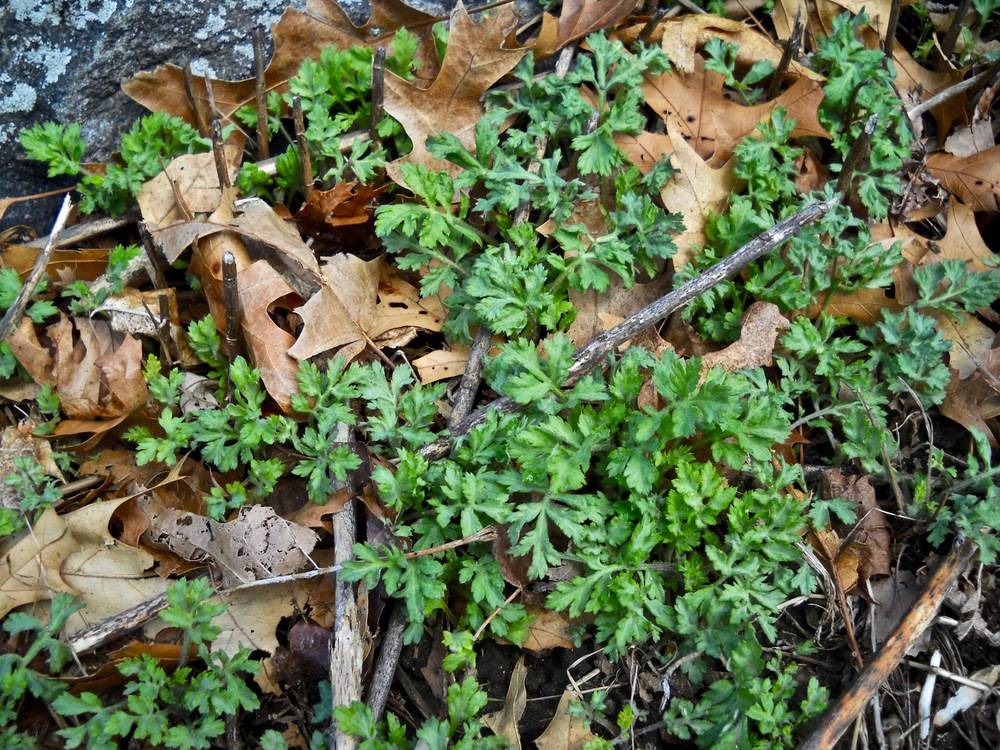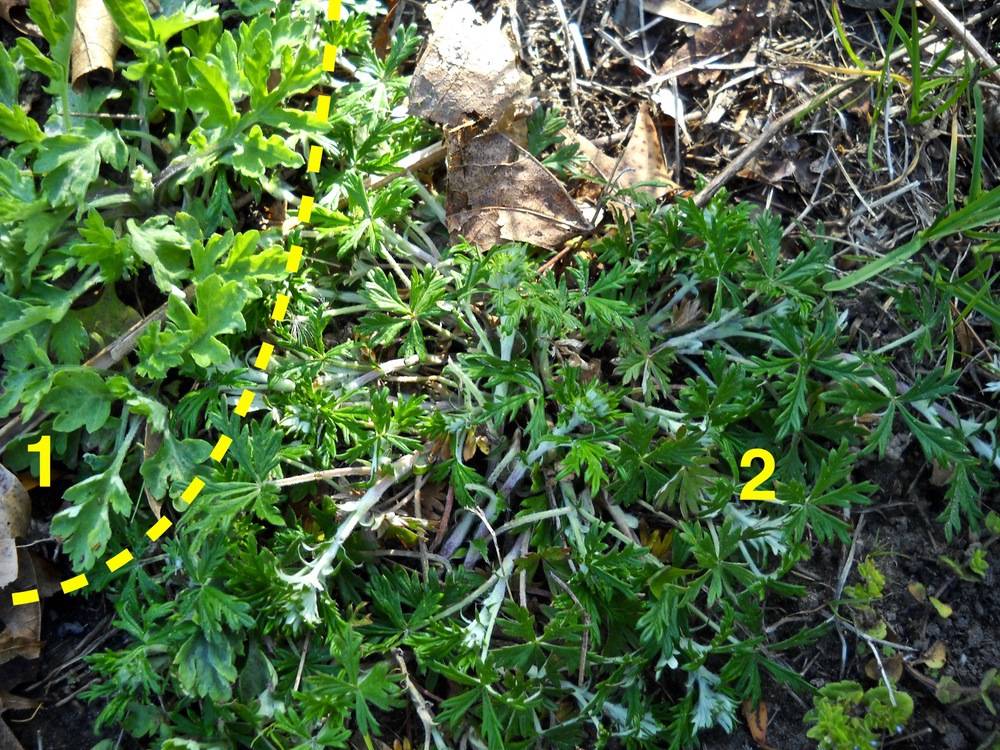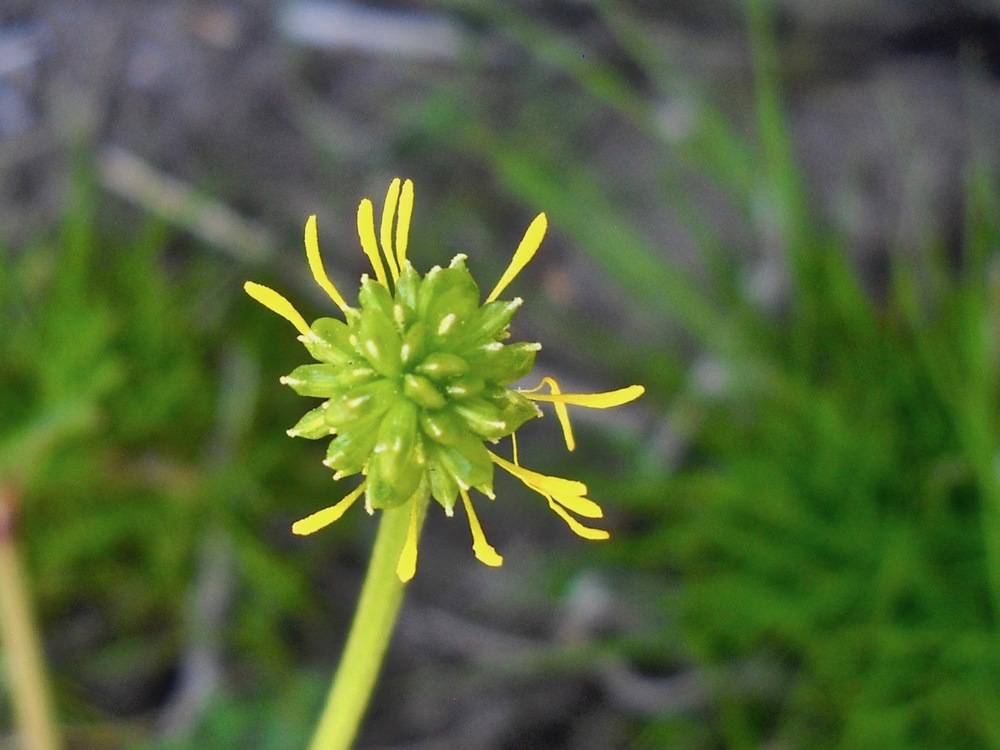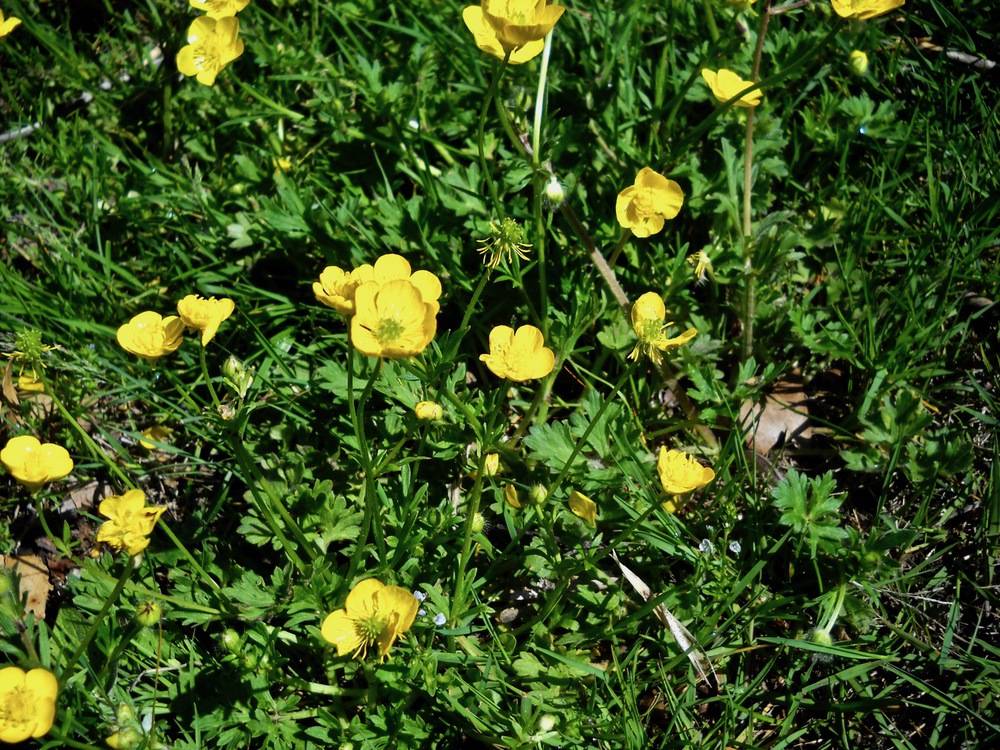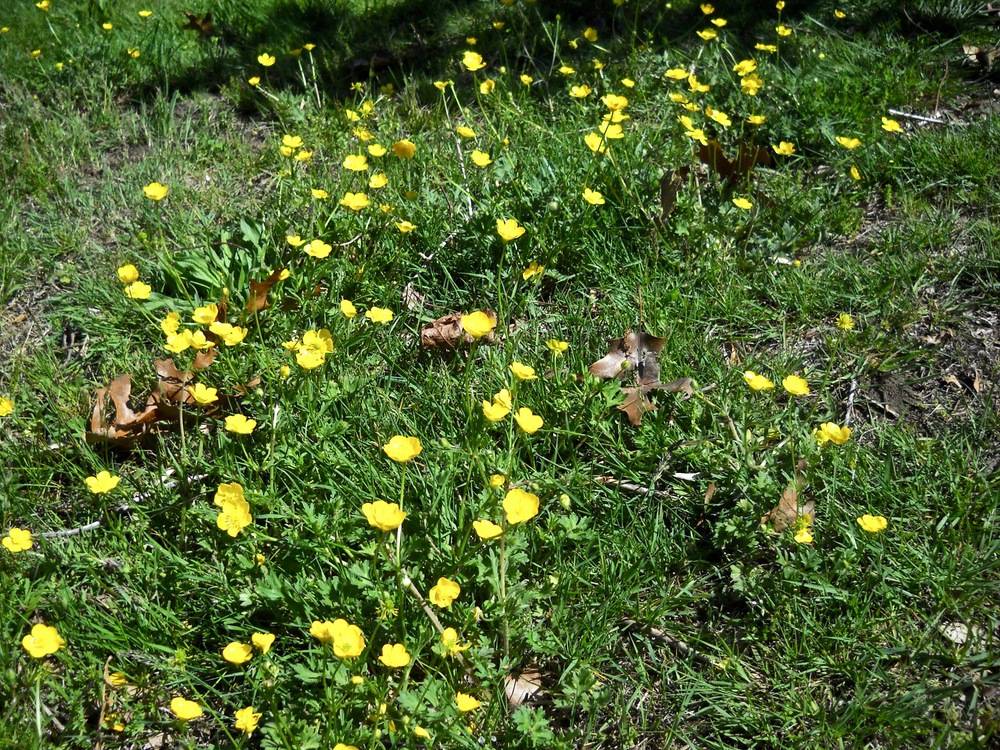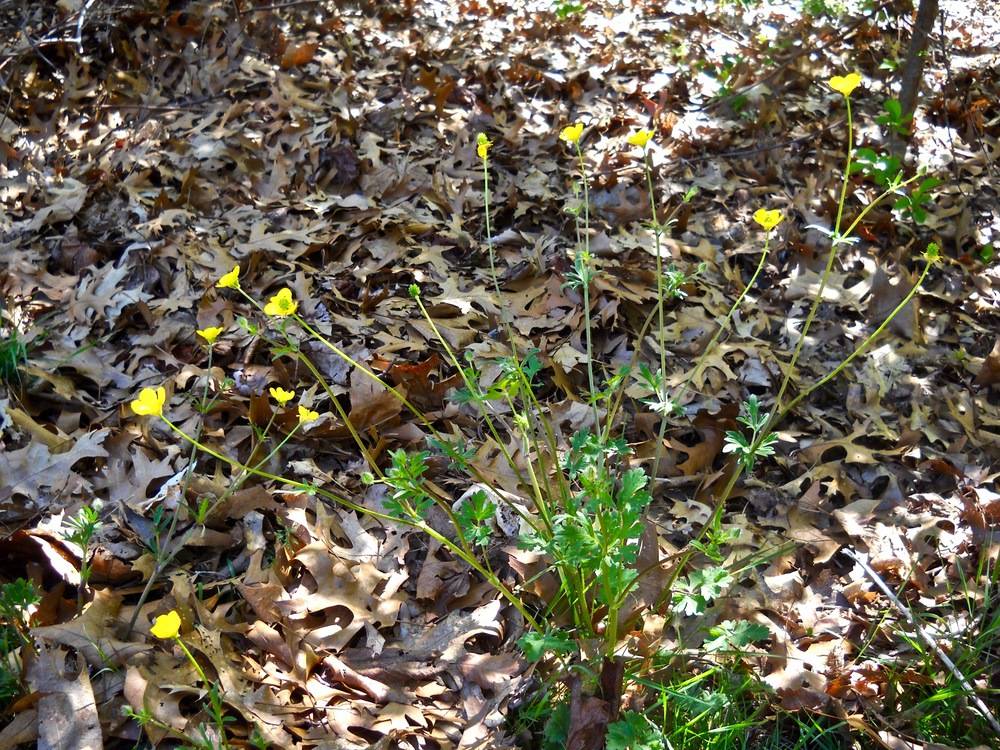bulbous crowfoot
Bulbous crowfoot is a perennial forb in the buttercup family that prefers sunny habitats with well-drained soil such as open meadows and fields. Its native range extends from the northern region of western Europe to northern Africa. There is no information on how or when the crowfoot was introduced to North America but a detailed description of its botanical and medicinal attributes was published in the early 1800's. A specimen deposited in the National Herbarium indicates that it was already present in Portland, Maine by 1857. Herbarium specimens collected in 1876 documented its presence in the Bronx, NY and the District of Columbia.
At Salter Grove, the bulbous crowfoot grows on the lawns east and south of the parking lot. It can be readily confused with the silver-leaved cinquefoil, which grows in much the same habitat and flowers at about the same time. Both have heavily dissected leaves that hug the ground, and both produce bright yellow flowers on short stems. However, unlike the cinquefoil, which drops its flower petals by early afternoon, the shiny yellow flowers of the crowfoot continue to brighten the lawn throughout the day.
It is very likely that the bulbous crowfoot was naturalized even before the 1800's since Native Americans in the Northeast used the roots of this introduced species to alleviate toothache, and a decoction was made from the plant to treat venereal disease. A medical text by an American physician from 1817-1820 talks about using this plant as an emetic. However, a book published in 1892 advised against using this plant by listing how preparations of this plant very adversely affected the skin, mucous membranes, and nervous system.
For more information:
https://gobotany.nativeplanttrust.org/species/ranunculus/bulbosus/
https://www.luontoportti.com/suomi/en/kukkakasvit/bulbous-buttercup
https://en.wikipedia.org/wiki/Ranunculus_bulbosus
http://naeb.brit.org/uses/search/?string=Ranunculus+bulbosus
https://www.henriettes-herb.com/eclectic/bigelow/ranunculus.html
Millspaugh, C.F. (1974). American Medicinal Plants. Dover Publications, Inc. pp. 17-19. (Original work published in 1892)

